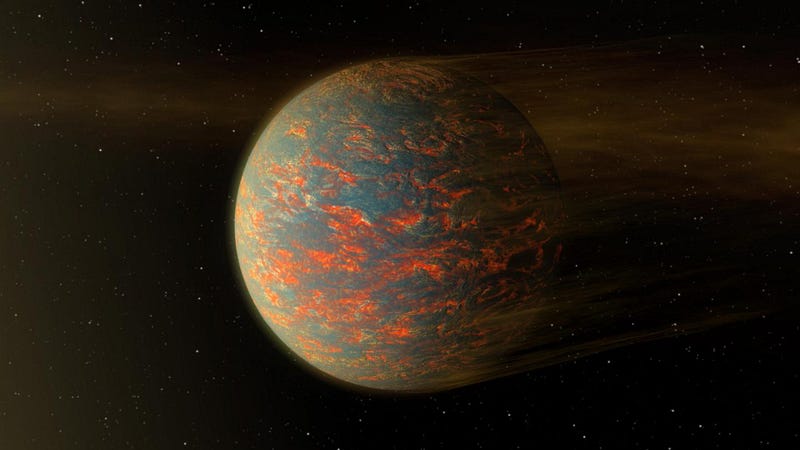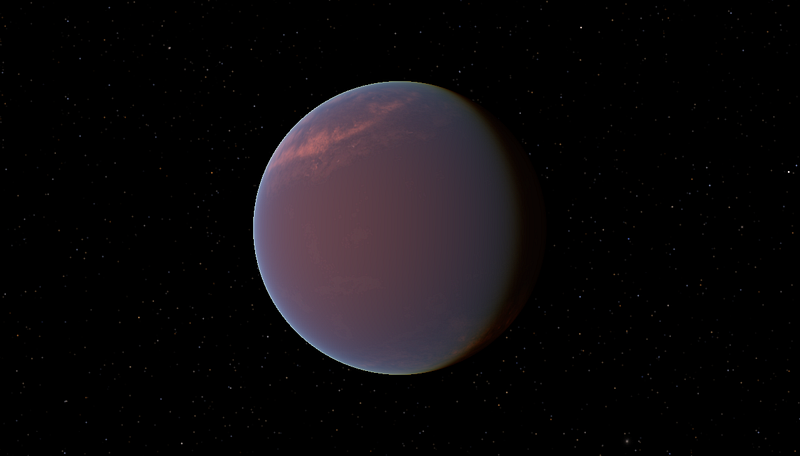Here's something I created a long time ago for a nationstates nation called Cybercratic Synecho
The Hyas System is a small star system located within the elliptical galaxy M32, a satellite galaxy of Andromeda. It was first settled approximately 13,000 Terra-years ago by the Human Expansion Corps and the Terraforming Authority, directed from earth as was common during the early times of colonial expansion. Once the rudimentary wormhole networks were developed in Andromeda through interbiotic cooperation with the community of intelligent civilizations in that galaxy, and trade networks began reaching their tendrils to the resource-rich globular clusters, Hyas, being the first system in M32 to be colonized, served as a permanent forward base for further colonization and assumed a leading role among the interstellar polities of the region. Still a center of resource trade, a beacon of high culture and effective government in a rather lawless region, the system has retained its independence and maintained its highly efficient and just artilectical government system.
The system consists of the red dwarf star, Hyas, which has been in existence for approximately 7.8 billion years, orbited by:
Aesyle - A very hot terrestrial world about twice the mass of earth, tidally locked orbit extremely close to star. Rich in heavy and exotic metals which are a major export. Surface is semi-molten due to proximity to star, allowing lava-dam mining operations. Atmosphere is thin but significant and consists of outgassed mercury and sodium vapor, wispy pink clouds of condensed sodium droplets can be seen in the polar regions near the terminator.
Niseis - A smaller (about 1.2 Terra masses) twin of Aesyle, much cooler and only mostly tidally locked, with a very slow rotation of one per three local years. Metal-mining, gas mining, and chemical industries major sources of system wealth in Andromeda and M32 economies. Substantial atmosphere of ionized free chlorine under about 7 terra-atmospheres' pressure present, resulting in thick clouds rolling along the planetary wind currents, and which occasionally form convective cells and fronts in the twilight regions and rain down to the surface resulting in ephemeral lakes of liquid chlorine and chlorine oxides which form along the terminator and dissipate in the "dawn", spectacular views from both the surface and space, and another source of export profits.
Polyxo - A small terrestrial world about mid-way between the mass of Mars and Venus, but only a little larger in volume than Mars due to greater density. Solid Cobalt inner core and liquid Copper-Manganese outer core produces a powerful magnetic field, while the atmosphere, at about a tenth terra-atmospheric pressure, consists of various chlorine oxides, some free chlorine, nitrogen and neon, while the surface consists of soil and rock based largely on fluoride minerals of Aluminum and Manganese. The planet is geologically active to a weak but present degree, with some active volcanoes and four major tectonic plates, while wide, shallow seas of hypochloric acid have produced a native biosphere metabolizing chlorine compounds between the air and water, while cell walls manifested through organohalogen chains. Small rooted plants reside by the seas and long, snakey rivers. At about two feet tall at most, the intertwined, nonvascular black plants appear as a kind of mangrove swamp in miniature. Inland, in the wide and dusty deserts, there are isolated cactus-like flora which feed on pure water in deep underground aquifers, growing to over 200 meter heights over many thousands of years, while a class of motile fungus-like organisms which feed from detritus, manifesting as small, thin, chinese-fan-like creatures which use the relatively powerful coastal gale-winds to move from tree to tree. Surface temperature ranges from 50-90 Celsius.
Synecho - A cool, habitable world on the outer ends of the goldilocks zone, geology is like to that of a gigantic Mars. At twice the volume of earth and about 1.4 times the mass, it is not very dense at all, and its geology is weak, with no tectonic activity (although there is evidence of some in the past), but some geological activity, as evidenced by the huge shield volcanoes. Its magnetic field is provided by a small Cobalt-Manganese core. The planet possessed no native life upon discovery, and was classed fit for terraforming. Terraforming was completed within 200 Terra-years. Today, the planet is covered with vast cities visible from space and stretching across the surface between lakes, shallow seas, rivers, and mineral-rich mountains, connected by hyperloops. Cities are also built deep in the deserts to take advantage of aquifers, mineral deposits, and serve as space-ports around the planet's 14 elevators. The center of the majority of the system's population, at 19,459,034,762 registered sentient beings, Synecho is both the capital and namesake of the CCS. The planetary government, as well as the administration of the rest of the system, is carried out by a series of interconnected artificial intelligentsia which manage all aspects of the economy and most aspects of politics. As part of the AI-drafted Cybercratic Constitution, economics are planned towards equitable abundance for all sentients, and the fulfillment of needs first, with the remainder production being sent for trade and export, the AI and their official sentient emissaries negotiating deals with other systems and trade networks across the galaxies. Social policy is extremely free, with the only restrictions on personal autonomy being ecological concern, while crime is dealt with via education and reform institutions, with exile being the final punishment for incorrigible repeat-offenders.
Thyone - An ice-giant planet about the size of neptune, consisting mostly of methane and ammonia with some hydrogen and helium and a core of ices. Its atmosphere is used for gas mining and radiation collection, while the largest moon, Aethra, is believed to have once been a small captured planet with rocky crust and cobalt-rich mantle. Aethra sports a native biosphere based on its sunward hemisphere ocean of liquid ammonia, and atmosphere of methane and carbon dioxide (produced by the ammonia-organisms), with deep purple plants hugging red seas full of dissolved alkali metals, while ruby rivers race down from icy highlands and purple jungles are lashed by frigid cyclones. The world is considered a xenobiological garden and access is strictly controlled, especially with the presence of known biont intelligence in a species known as the "Triskelion Walkers", bright red entities which consist of a central node with three legs spaced in a triangular fashion, locomotion achieved through the use of a hydraulic counterweight system which causes water to fill an outward-stretched forward leg which pulls the organism forward, the bottom leg acting as a fulcrum, while the hind leg empties and becomes lighter, rising to the apex, filling with ammonia, and falling forward, beginning the walk cycle again. Between the legs are three sets of branching tendrils which are used for manipulation, two large deep-infrared receptive lens-eye structures are set in either side of the central node, and sphincter mouths on the ends of the feet, surrounded by fourteen claw-like growths, and within which are small rocks embedded into the esophagal skin which are believed to function as grinding teeth. The organisms have displayed complex social behavior, mastery of reducing reactions in their local environment for useful purpose, tool-use, and primitive agriculture along the largest river systems utilizing some variety of watermelon-sized purple-blue root which is mashed with large rocks and subject to various reducing reaction treatments to create a thick mash which is apparently edible. Tourists and scientists flock to the system to view these creatures from space. For the 14,000 years the species has been observed, it has undergone a very slow state of advancement, with very gradual spreading of the agriculture and some congregation of habitats manifesting as town-like structures beginning about 2,000 years ago. It is unknown how long this state will continue.
Other than Aethra, the other large moons in the system, Pytho and Eudora, are typical gas-giant ice-moons. Eudora is considerably rockier than most of the rest, and its interior is warmed considerably by tidal forces resulting from interactions with Aethra and Pytho. It is geologically active, with tectonics, high mountains, and volcanoes, mostly of a cinder-cone type but with the presence of a few shield and composite cone varieties and a terraformed atmosphere of nitrogen-oxygen, which has allowed some controlled melting and shallow seas, and a small amount of settlement. Pytho is more typical, and is rather callistonian, with numerous impact craters and a frosty surface. It possesses an extremely thin atmosphere of ammonia vapor, which occasionally results in ammonia snow and thin, wispy clouds.




